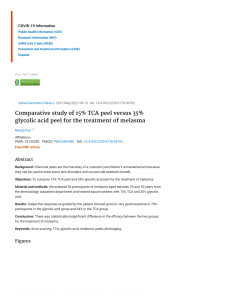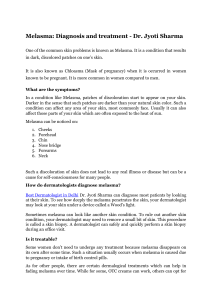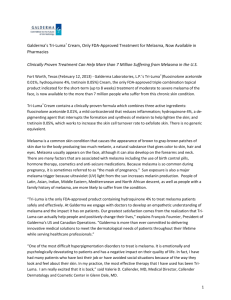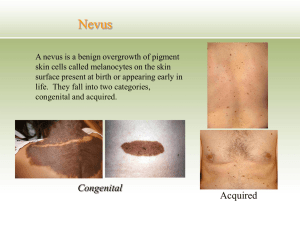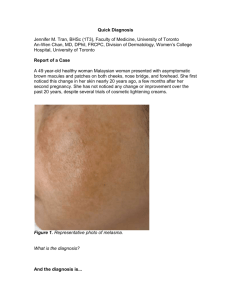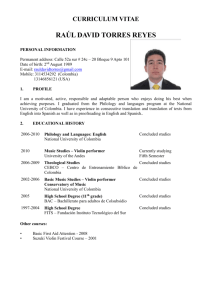JUNE 2013 e106 VOLUME 12 • ISSUE 6 Copyright © 2013
advertisement
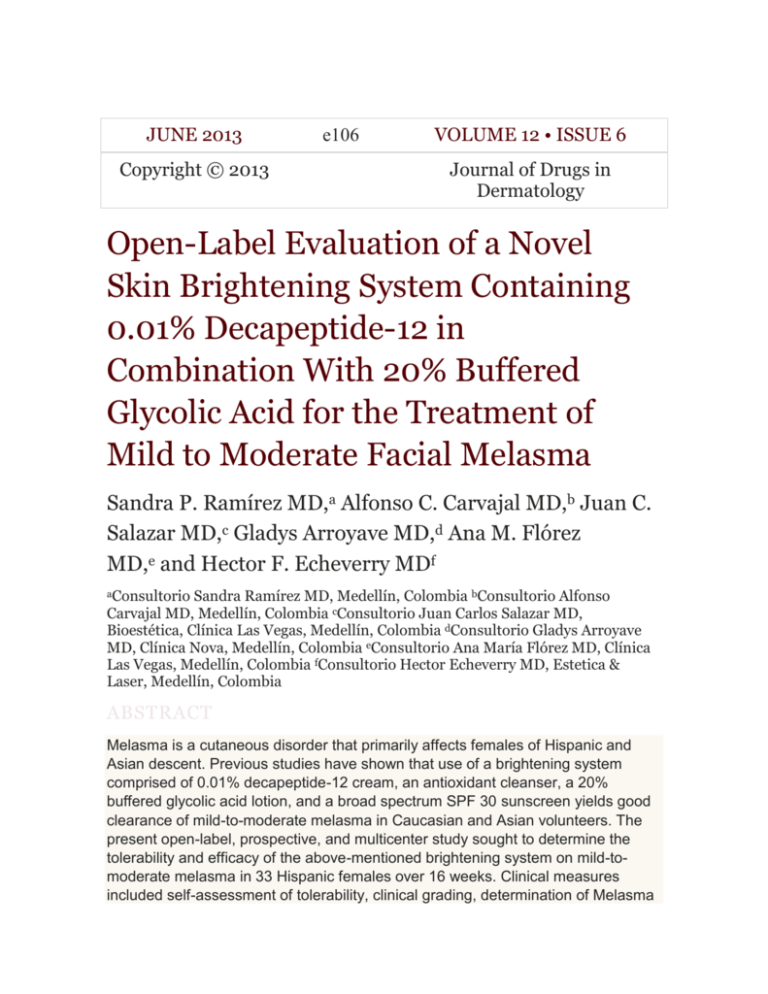
JUNE 2013 e106 VOLUME 12 • ISSUE 6 Copyright © 2013 ORIGINAL ARTICLE Journal of Drugs in Dermatology Open-Label Evaluation of a Novel Skin Brightening System Containing 0.01% Decapeptide-12 in Combination With 20% Buffered Glycolic Acid for the Treatment of Mild to Moderate Facial Melasma Sandra P. Ramírez MD,a Alfonso C. Carvajal MD,b Juan C. Salazar MD,c Gladys Arroyave MD,d Ana M. Flórez MD,e and Hector F. Echeverry MDf aConsultorio Sandra Ramírez MD, Medellín, Colombia bConsultorio Alfonso Carvajal MD, Medellín, Colombia cConsultorio Juan Carlos Salazar MD, Bioestética, Clínica Las Vegas, Medellín, Colombia dConsultorio Gladys Arroyave MD, Clínica Nova, Medellín, Colombia eConsultorio Ana María Flórez MD, Clínica Las Vegas, Medellín, Colombia fConsultorio Hector Echeverry MD, Estetica & Laser, Medellín, Colombia ABSTRACT Melasma is a cutaneous disorder that primarily affects females of Hispanic and Asian descent. Previous studies have shown that use of a brightening system comprised of 0.01% decapeptide-12 cream, an antioxidant cleanser, a 20% buffered glycolic acid lotion, and a broad spectrum SPF 30 sunscreen yields good clearance of mild-to-moderate melasma in Caucasian and Asian volunteers. The present open-label, prospective, and multicenter study sought to determine the tolerability and efficacy of the above-mentioned brightening system on mild-tomoderate melasma in 33 Hispanic females over 16 weeks. Clinical measures included self-assessment of tolerability, clinical grading, determination of Melasma Area and Severity Index (MASI) scores, and standardized clinical photography. Results showed that the system was well tolerated with no adverse events reported. Mean decreases of 36%, 46%, 54%, and 60% in MASI scores were observed at weeks 4, 8, 12, and 16, respectively, which were further corroborated by standardized photography showing visible reduction in the appearance of melasma. Results suggest that the brightening system consisting of 0.01% decapeptide-12 cream, an antioxidant cleanser, 20% buffered glycolic acid lotion, and broad spectrum SPF 30 sunscreen is safe and efficacious for the treatment of mild-to-moderate melasma in Hispanic females. J Drugs Dermatol. 2013;12(6):e106-e110. INTRODUCTION Melasma is a common cutaneous disorder that presents as patches of darker pigmentation on the cheeks, forehead, upper lip, nose, and chin. 1 Melasma most commonly affects females of Asian and Hispanic descent having Fitzpatrick skin type (FST) of IV and higher, and only affects a very small percentage of men.2 Moreover, pregnancy appears to be a contributing factor in bringing about the onset of melasma in females, supporting the proposed role of hormones in the regulation of melanogenesis in women.3,4 Various skin lightening agents such as kojic acid, azelaic acid, ascorbic acid (and its derivatives), and hydroquinone ([HQ] and its arbutin derivatives) are currently used to treat melasma but are either efficacious and cytotoxic or are mildly efficacious and non-toxic.5 Although HQ is one of the most effective and popular skin lightening compounds, it has been shown to cause irritant contact dermatitis (in up to 70% of patients), pregnancyinduced hypertension, hypopigmentation, and allergic contact dermatitis. 6-8 In 2006, the US Food and Drug Administration (FDA) proposed a new ruling that would ban HQ, and any ingredients with “skin bleaching” claims, from all cosmetics (currently HQ is allowed in the United States at concentrations of 2% or less) and require a new drug application for products containing higher concentrations of HQ. The FDA proposed such a ban on the basis of (1) suspected high absorption rates, (2) reports of exogenous ochronosis in humans, and (3) murine hepatic adenomas, renal adenomas, and leukemia after large doses over an extended period.9 Although the FDA has not yet taken further action, it is clear that there is a need for novel compounds that strike a balance between skin lightening efficacy and dermal/systemic toxicity. Tyrosinase is a key enzyme involved in producing melanin and other pigments in plants and animals. It has been previously demonstrated that a novel synthetic oligopeptide (decapeptide-12)
